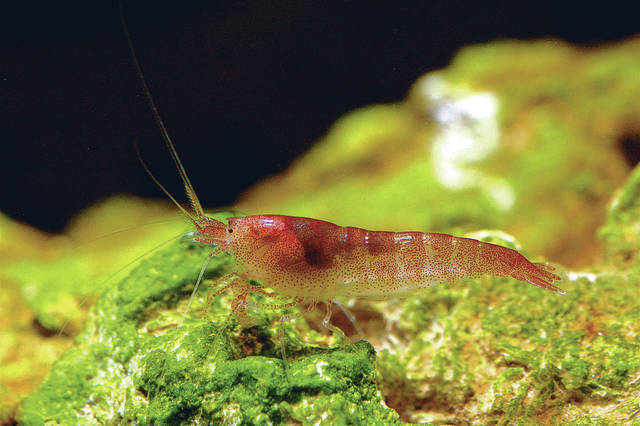‘Rare ecosystem’ being destroyed as homeless move in

COURTESY DLNR
The opae ula shrimp live in an underground cave system accessible through openings in the Pu‘uhonua O Waianae encampment. Some residents of the homeless camp have tried to protect those openings by removing foliage around them, but an expert says the shrimp rely on the vegetation for food.

DENNIS ODA / DODA@STARADVERTISER.COM
This is one of the many opae ula holes in the Waianae homeless encampment by the Waianae Boat Harbor.


State Department of Land and Natural Resources officials believe the state-owned land beneath the Pu‘uhonua O Waianae homeless encampment contains ancient burial sites, pre- and post-contact rock walls that have been destroyed, and a rare “Waianae lineage” of half-inch-long shrimp living in an underground cave system.
Bruce Anderson, administrator for DLNR’s Division of Aquatic Resources, said DLNR staff need to be able to properly study what he called a “rare ecosystem” that’s currently surrounded by dogs, humans and homeless structures.
“Protecting this rare ecosystem is incompatible with having a large homeless camp on the property,” Anderson said. “This is the only area in the entire state that consists of a pure population of a distinct genetic strain of opae ula known as the Waianae lineage.”
The area also is home to ancient limestone reefs called “karst geology.”
RELATED
>> Growing Waianae homeless camp at center of dispute at harbor
>> Camp residents are expected to follow rules
Don't miss out on what's happening!
Stay in touch with breaking news, as it happens, conveniently in your email inbox. It's FREE!
“The karsts underlying the property represent one of the last remaining examples of the Waianae karst in its most natural condition,” Anderson said.
Pua Aiu, who has the DLNR title and responsibilities of “cultural resources manager on special assignment to assist with homeless concerns,” wrote to the Honolulu Star-Advertiser through a DLNR spokeswoman that the area used to contain “archaeological sites” that she did not describe.
But none could be found while doing a site visit in 2015, Aiu wrote.
DLNR’s former chairman, William Aila Jr., said, “There are a few burials there,” along with former rock walls that were built before and after Western contact.
“One of the concerns is that they (homeless occupants) are moving the rocks around,” Aila said.
Anderson said: “Some of the structures were repurposed for building walls and other things the homeless built over time, like fireplaces and to form property lines. Most of what was there has been destroyed or no longer visible because of all of the human activity.”
In 1983, the state transferred the 19.5-acre parcel to the city’s Department of Parks and Recreation to be used as a park.
But the discovery of thousands of opae ula in water-filled sinkholes — known as anchialine pools — “made it impossible to develop the park,” Anderson said. “Basically it was too unstable because it’s a network of underground caves and caverns that extends down below sea level. It’s a living system.”
In 2008, the city returned the land to DLNR’s Division of Aquatic Resources.
Over time, humans and dogs left feces in the sinkholes, along with human garbage, Anderson said.
“Unfortunately, the sinkholes also provide a place for the humans to dump waste and human waste,” he said. “The sinkholes have become toilets, essentially, dumping into this valuable ecosystem. One of the major concerns is this is going to become an underground sewer.”
Some homeless residents have tried to protect the sinkholes by forming rocks around them and by removing foliage.
But DLNR aquatic biologist Annette Tagawa said the shrimp rely on the foliage for nutrients. And the absence of vegetation only sped up erosion, allowing more sediment into the sinkholes.
“That doesn’t help,” Tagawa said. “I said, ‘Just leave the pools alone.’ But they went ahead and pulled out all the vegetation that they (shrimp) rely on for food. And that just accelerates the runoff.”
Anderson believes that ancient Hawaiians used the Waianae lineage of opae ula as bait to attract opelu that live nearby and were caught in nets.
So the modern destruction of rock formations and threats to the Waianae lineage of opae ula are incompatible with ancient practices, Anderson said.
“From a human health and public health standpoint, this is a major problem,” Anderson said. “From the ecosystem’s standpoint, it’s also a serious concern. This is certainly not the Hawaiian way.”



